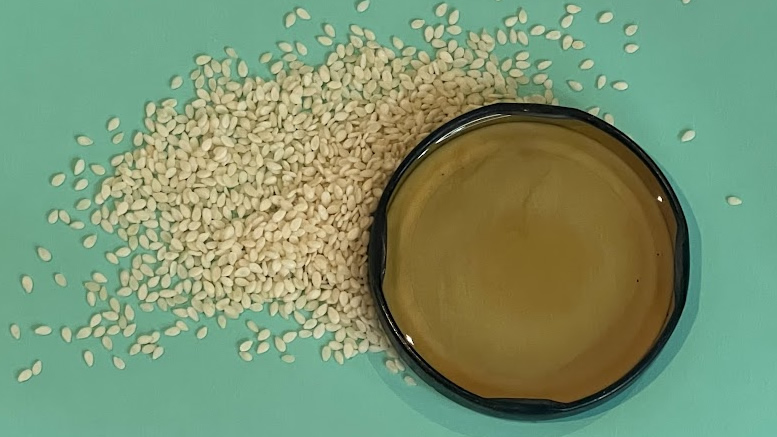Sesame, a resilient and ancient plant, has deep roots in Asian agriculture, cuisine, and culture. While its origins trace back to Africa and Asia, sesame has flourished across the tropical and subtropical zones of the world, prized for both its nutritional benefits and aromatic oil.
Today, sesame remains a cornerstone of many Asian kitchens, from street food stalls to fine dining. Its seeds and oil are used to season, garnish, marinate, and even celebrate.
Culinary Use in Asian Traditions
Sesame’s contributions to Asian cooking are both diverse and indispensable:
- Sesame oil, with its distinctively nutty aroma, is used as a finishing touch in stir-fries, noodles, soups, marinades, dipping sauces, and dressings. Whether it’s a dash over Korean bibimbap, a drizzle in Chinese hot and sour soup, or a splash in Japanese goma-ae (sesame spinach salad), its deep flavour profile elevates everyday dishes.
- Toasted sesame seeds are sprinkled over rice, noodles, meats, and vegetables to add texture, flavour, and visual appeal. Ground sesame is also the star of many sauces and sweets, especially in Japanese, Korean, and Southeast Asian desserts.
- In Indian cuisine, sesame seeds (often called til) are used in chutneys, flatbreads, and sweets, particularly during festive occasions like Makar Sankranti, where sesame-based treats are exchanged as symbols of goodwill.
Cultural Symbolism and Celebration
In many Asian cultures, sesame carries rich symbolic meaning:
- In China, sesame is associated with prosperity and longevity, often used in celebratory pastries.
- In Korea, sesame oil is considered a traditional cooking essential, revered for its earthy, aromatic qualities.
- In Japan, sesame seeds (goma) appear in both everyday dishes and auspicious foods, symbolising health and fertility.
Sesame is more than just a flavour enhancer—it’s often woven into the rituals, festivals, and traditional medicine of Asian societies.
Economic and Agricultural Importance
Asia is both a major producer and consumer of sesame:
- Countries like India, China, and Myanmar cultivate sesame extensively, exporting both raw seeds and refined oils.
- Sesame farming supports millions of smallholder farmers, contributing significantly to rural economies and global trade.
- The crop’s resilience and minimal water requirements make it well-suited to challenging climates, ensuring its ongoing importance in regional agriculture.
Forms and Kitchen Tips
Sesame is available in several forms, each with its own use in the kitchen:
- Toasted sesame oil: Rich and aromatic, used as a finishing oil rather than a cooking base. Store in a cool, dark place, and refrigerate after opening for maximum freshness.
- Light sesame oil (untoasted): Milder and suitable for frying and sautéing.
- White sesame seeds: Used raw, roasted, or ground in both savoury and sweet recipes.
- Black sesame seeds: More robust in flavour, often featured in desserts and sauces in Chinese and Japanese cuisine.
To toast sesame seeds at home, simply heat them in a dry pan over low heat until fragrant and golden. Be sure to stir constantly to prevent burning.
From spicy sesame noodles to toasted rice crackers, sesame is one of the most versatile and symbolic ingredients in the Asian pantry. Its rich flavour, nutritional value, and cultural depth make it an essential component of both traditional and modern Asian cuisine.

